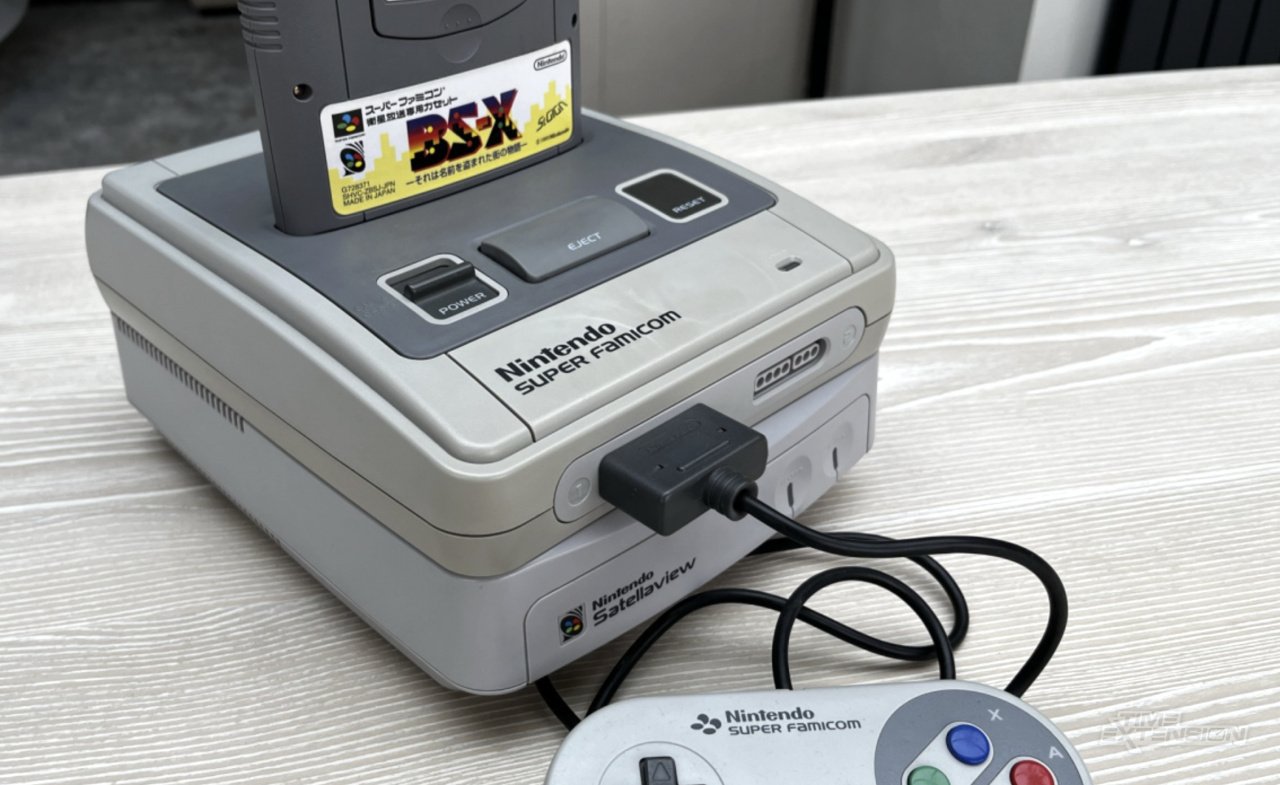An unorthodox radio station, exclusive games, and a bitter breakup.
Few aspects of Nintendo’s history are as fascinating to us as the Nintendo Satellaview. Nintendo R&D2 designed the Japanese-exclusive Super Nintendo add-on back in the mid-’90s, with the device allowing users to download video games and other services via a satellite connection.
It came about as the result of Nintendo’s investment in a Japanese broadcasting company called St Giga (or the Satellite Digital Audio Broadcasting Corporation, to give it its proper name) and was home to new games in the F-Zero, The Legend of Zelda, and Super Mario series, as well as titles from third-party developers like Squaresoft, ASCII, and Chunsoft. However, today it is a part of Nintendo’s history that the famous company rarely, if ever, acknowledges, with most of its library completely inaccessible without the help of emulation and a dedicated community of preservationists who have been intent on rescuing and documenting different parts of its service for future generations.
Read the full article on timeextension.com
An unorthodox radio station, exclusive games, and a bitter breakup.
Few aspects of Nintendo’s history are as fascinating to us as the Nintendo Satellaview. Nintendo R&D2 designed the Japanese-exclusive Super Nintendo add-on back in the mid-’90s, with the device allowing users to download video games and other services via a satellite connection.
It came about as the result of Nintendo’s investment in a Japanese broadcasting company called St Giga (or the Satellite Digital Audio Broadcasting Corporation, to give it its proper name) and was home to new games in the F-Zero, The Legend of Zelda, and Super Mario series, as well as titles from third-party developers like Squaresoft, ASCII, and Chunsoft. However, today it is a part of Nintendo’s history that the famous company rarely, if ever, acknowledges, with most of its library completely inaccessible without the help of emulation and a dedicated community of preservationists who have been intent on rescuing and documenting different parts of its service for future generations.
Read the full article on timeextension.com










